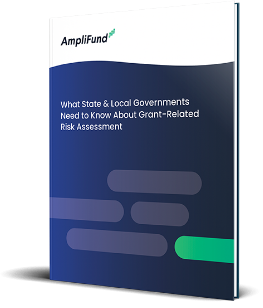We know many grant makers publish new funding opportunities in the spring, and using purpose-built tools to create and manage them saves organizations a lot of time and effort.
A grant management system (GMS) allows grant making organizations to design, configure, and publish grant opportunities tailored to specific funding needs, requirements, and criteria with just a few clicks.
To help you get ready for a new round of funding, we want to share some best practices and tips to make sure you’re using your GMS to create accessible applications that get you the data you need. By creating opportunities effectively, you will streamline the application process itself and increase your ability to make an impact for your applicants, your organization, and your community.
Plan Your Application Structure
Applicants and reviewers can get lost in an application that isn’t structured effectively. You can make the application and review process a better experience for applicants and your internal reviewers by designing your applications in a more intentional way.
Grants management software like AmpliFund gives you unlimited application forms, sections, and questions that you can use to build out applications. While you can add anything you would like to an application, try to stay aware of how much “scrolling” each applicant will have if there are a lot of questions on the form.
Start by mapping out the structure of the opportunity on paper. Using different sections can help you organize questions and create a clear divide between the types of data you are gathering and keep the form easy to navigate.
Make a note of how many pages your application is when you have it planned out and put yourself in your applicant’s shoes. Are there redundant questions that could be reduced or eliminated? If so, make those edits to save your applicants, and yourself, time later.
Tip: Make your questions unique and descriptive, and double check that they make sense in the section you’ve placed them. For example, “Address” repeated throughout the application can make data confusing to read later. Instead, try asking for more specific data like “Site Mailing Address” instead of just “Address.”
Give and Get the Right Information
Solutions like AmpliFund offer you the ability to create custom opportunities that provide applicants and reviewers with information, instruction, documents, or links directly in the form. This is a great way to streamline information and put it all at the users’ fingertips!
Here are some quick tips to help you customize your applications in a way that is more efficient for your applicants that gets you the data you need from them.
- Be sure to double check any links or documents you insert for accuracy.
- Add required fields to help ensure you receive the right information from applicants on the first submission.
- Insert instructions that remind applicants to mark the form as complete at the bottom of each application page.
- Add support instructions for applicants right in the opportunity and link information to help them navigate without needing to reach out to you.
Plan for Reporting
Make sure you are truly getting all the data from your applications that you need to assess the risk level of an applicant or create a grant agreement with later.
Having the ability to export application data is one of the biggest advantages of using an electronic application process in a grants management system. As you craft your application, think through what data requests you might receive and what data you’ll need from the application to populate contract documents later when you move approved applications immediately to post-award monitoring.
Don’t Reinvent the Wheel
While many funding organizations do offer the same, or similar, opportunities from year to year, the details evolve over time to support changing compliance requirements. Your opportunities should be revisited and revised as necessary from year to year, but you don’t have to start from scratch.
If your application is like one that you’ve used in previous years, there is no reason you shouldn’t start by copying that opportunity and then making necessary changes to keep it current.
With AmpliFund, you can just use one-click copy to bring over the opportunity details, application forms, settings, and budget and performance plan templates to the new application, and then customize or make changes from there.
Tip: If this is a new opportunity, be sure to create/save form templates to use in the future.
Test, Test, Test
Don’t forget to test your opportunity before going live. Double check small details that are easy to pass over, like the year. Review all attachments, make sure you can edit if needed, and check if there any protected cells. After reading everything over yourself, ask a colleague to test your opportunity in the system too. They may find things that you missed.
Wrap Up
Organizations are managing more funding than ever, and they don’t have the resources to match. While creating a custom application may sound like it will take time and effort away from your team, it ultimately creates capacity by streamlining your processes and reducing your applicant’s need for support and guidance during the process.
You also don’t have to do it by yourself.
For more support creating custom opportunities, or standardizing your processes for application, review, and scoring, contact us anytime.
*Photo by fauxels on Pexels






